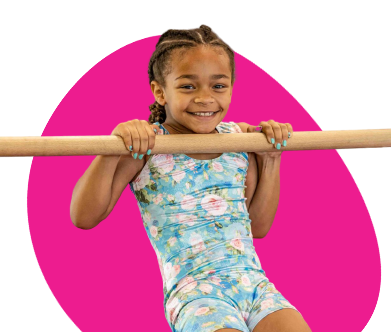There are so many fun milestones to look forward to once you bring baby home and crawling is one of them.
Crawling marks an exciting stage in your baby’s journey toward independence and exploration. And, while every baby develops at their own pace, there are plenty of strategies and activities you can use to encourage and support your baby as they master this essential motor skill.

Simple Tips to Get Baby Crawling
Most babies start crawling at around 6 to 10 months, with muscle strength, coordination, and motivation all playing a role.
If you’re excited to see your baby crawl and want to do more to get them started, here are a few things you can do to encourage crawling.
Plan More Tummy Time
Tummy time is essential for building strength in your baby’s neck, shoulders, and core muscles, which are necessary for crawling. Start with short sessions of tummy time several times a day, gradually increasing the duration of each session as your baby grows more comfortable.
You can also place a rolled-up towel or small pillow under your baby’s chest during tummy time to provide extra support and encouragement for lifting their head and shoulders off the ground.
Create a Stimulating Environment
Start by setting up a safe and baby-proofed environment that allows your little one plenty of space to move and explore freely. Provide a variety of textures and surfaces for crawling practice, such as carpets, mats, and soft blankets.
A little motivation also goes a long way in getting baby crawling. Place toys or objects just out of your baby’s reach to motivate them to move and explore. Choose toys with interesting textures, colors, and sounds to capture your baby’s attention and encourage movement towards them.

Show Them How It’s Done
Most babies learn and develop through observation, so it helps to get down on the floor with your baby and demonstrate crawling movements. Encourage your baby to imitate you by moving their arms and legs in a crawling motion. You can also gently guide their hands and knees to help them get started.
You can also place your hands behind your baby’s feet and gently lift their hips to encourage them to push off with their legs. This can help babies begin to experience the sensation of moving forward and build confidence in their crawling abilities.
Enroll In a Parent-Child Class
Parent-child classes are not only a great opportunity for you to bond with your little one, but can also do a lot for your baby’s development.
Classes at The Little Gym will let your baby play while they take essential steps towards reaching key milestones on their developmental path. Tummy time is just a small part of the many activities your little one will be exposed to during these nurturing and engaging classes, bringing you one step closer to the crawling stage.

Patience and Celebrations!
Remember that babies develop at their own pace, and it’s normal for progress to be gradual. Be patient and supportive as your baby learns to crawl, and provide plenty of love and encouragement along the way.
Celebrate even the smallest milestones and progress your baby makes towards crawling. Offer plenty of praise, smiles, and encouragement to motivate your baby to keep trying.
Types of Baby Crawls
If you’re a first-time parent, you might not know that babies crawl differently, so you may not see a classic crawl the first time around.

Here are some of the other types of baby crawls your little one might attempt:
- Cross crawl: When a baby starts crawling this way, they will put all their weight on their hands and knees. They will then move one arm and the opposite knee forward at the same time.
- Bear crawl: Instead of crawling on their hands a knees, your little one may keep their elbows and knees straight, which means they will move around on their hands and feet instead.
- Crab crawl: Another cute type of crawl is the crab crawl, which will see your baby moving backward or sideways with their hands like a crab.
- Commando crawl: Many babies choose to start crawling by dragging their bellies on the floor, kind of like a military-style crawl.
- Bottom scooting: Instead of a classic crawl, some babies prefer to scoot around on their bottoms, using their arms to propel them forward.
- Rolling crawl Lastly, there’s the rolling crawl. To get around, a baby rolls from one place to another.
A Crawl In the Right Direction
At The Little Gym, we are passionate about early childhood developmental milestones, which is why we created our Bugs classes.
Our Bugs classes are specifically designed for infants and have a strong focus on muscle development, sensory exploration, and socialization skills. Our qualified instructors are there to ensure your little one is strengthening all the muscles they need to crawl and eventually, walk.
We’ve created a nurturing and stimulating environment where your baby can thrive, grow, and explore the world around them while you cheer them on every step of the way. As an added bonus, you will get to connect with other parents from your community and share in the joy of every crawl, giggle and milestone met along the way..
You can find out more about Bugs classes at The Little Gym near you here.


